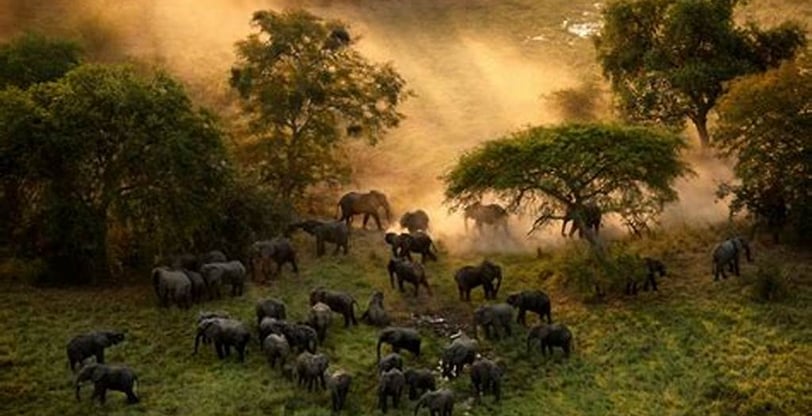JIM CORBETT NATIONAL PARK
Jim Corbett National Park is one of the oldest and most renowned national parks in India, located in the state of Uttarakhand. Established in 1936 as Hailey National Park, it was later renamed in honor of Jim Corbett, a British hunter, conservationist, and author known for his efforts in wildlife conservation and for hunting several man-eating tigers and leopards in the area.
GARIMA NAIN
3/13/20243 min read


Here's some key information about Jim Corbett National Park:
Location: Situated in the foothills of the Himalayas in Uttarakhand, India, the park spans across two districts - Nainital and Pauri Garhwal.
Area: The park covers an area of approximately 520 square kilometers, encompassing a diverse range of habitats including dense forests, grasslands, riverine belts, and hills.
Wildlife: Jim Corbett National Park is famous for its rich biodiversity. It is home to a variety of flora and fauna, including Bengal tigers, leopards, elephants, spotted deer, sambar deer, barking deer, wild boars, and numerous species of birds.
Activities: Visitors to the park can engage in various activities such as jeep safaris, elephant safaris, bird watching, nature walks, and trekking. The park offers opportunities for wildlife enthusiasts and nature lovers to explore its wilderness and observe its inhabitants in their natural habitat.
Dhikala Zone: One of the most popular zones within the park is the Dhikala zone, known for its picturesque landscapes and abundant wildlife. It offers overnight stays in forest rest houses, providing visitors with a unique experience of staying amidst the wilderness.
Best Time to Visit: The park is open to visitors from mid-November to mid-June. The best time to visit is during the winter months (November to February) when the weather is pleasant and wildlife sightings are more frequent. However, the park remains closed during the monsoon season (July to mid-November) due to heavy rainfall and flooding.
Jim Corbett National Park attracts tourists from all over the world seeking an immersive wildlife experience and a glimpse of the majestic Bengal tiger in its natural habitat. It not only offers adventure and excitement but also promotes conservation efforts aimed at preserving India's natural heritage.
You
DISCOVER THE BEST TIME TO VISIT JIM CORBETT NATIONAL PARK
The best time to visit Jim Corbett National Park largely depends on your preferences and what you hope to experience during your visit. Here's a breakdown of the different seasons and their characteristics:
Winter (November to February):
Weather: Winter brings cool and pleasant weather to Jim Corbett National Park. Days are usually sunny with temperatures ranging from 5°C to 25°C.
Wildlife: The dry winter season makes it easier to spot wildlife as animals gather around water sources. It's an excellent time for tiger sightings and observing various bird species.
Activities: Safaris and outdoor activities are enjoyable during this time due to the comfortable weather.
Spring (March to April):
Weather: Spring brings warmer temperatures, with daytime highs ranging from 15°C to 30°C. Nights remain cool and pleasant.
Wildlife: The park starts to get greener during spring, and wildlife sightings continue to be good. It's a great time for birdwatching as migratory birds start to arrive.
Activities: Safaris and outdoor activities are still enjoyable, although temperatures can be warmer during the day.
Summer (May to June):
Weather: Summer in Jim Corbett National Park can be hot and dry, with temperatures ranging from 25°C to 40°C. May is usually the hottest month.
Wildlife: Wildlife sightings can be more challenging during the hotter months as animals seek shade and waterholes become crowded. However, tiger sightings are still possible.
Activities: Early morning and late afternoon safaris are recommended to avoid the heat. Wildlife viewing may not be as abundant as in other seasons, but it's still possible.
Monsoon (July to October):
Weather: The monsoon season brings heavy rainfall to the region, making the park inaccessible and unsafe for visitors. The park remains closed during this time to prevent accidents and protect wildlife.
Wildlife: While the park is closed to visitors during the monsoon, this period is crucial for replenishing water sources and sustaining the park's ecosystem.
Activities: The park remains closed to tourists during the monsoon season.
Based on these factors, the best time to visit Jim Corbett National Park for wildlife viewing and comfortable weather is typically during the winter months (November to February) and the spring season (March to April). However, if you prefer warmer weather and don't mind the possibility of hotter temperatures, early summer (May) can also be a good time to visit. It's essential to plan your visit according to your preferences and the experiences you hope to have in the park.
